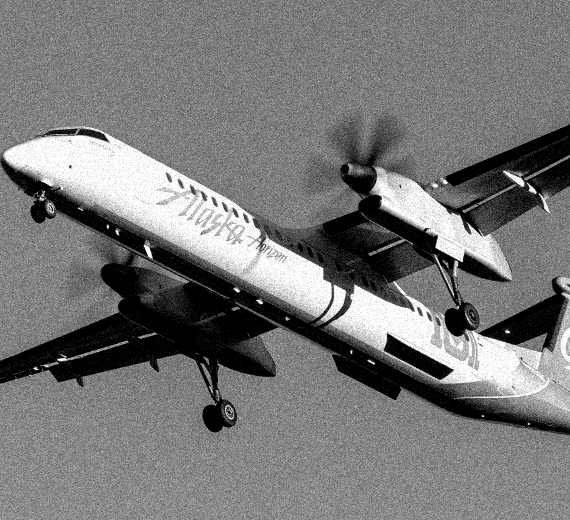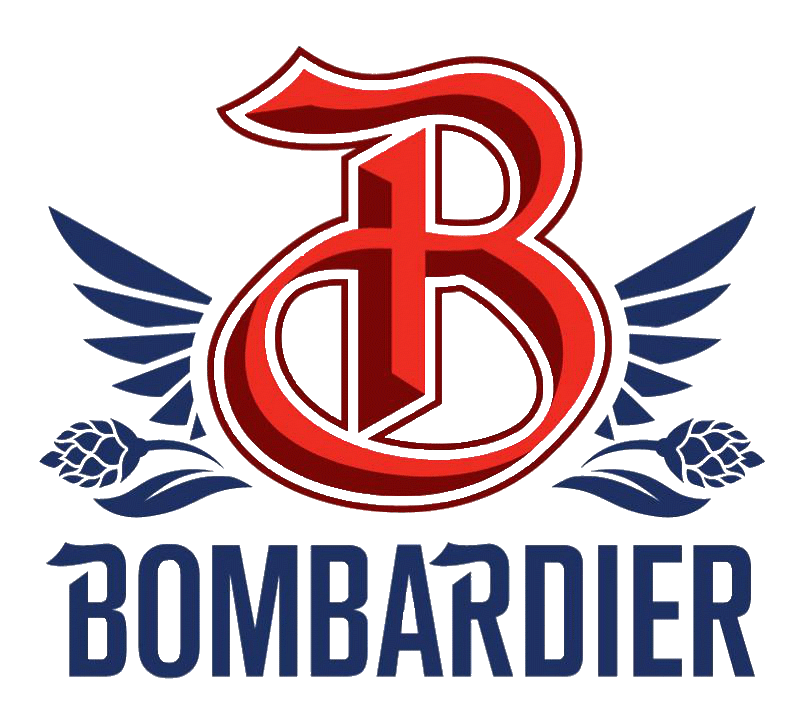De Havilland Canada
DHC-8 Q-Series
 |
|
| Type | Turboprop regional airliner |
|---|---|
National origin Canada
Manufacturer de Havilland Canada (1983–1992)
Bombardier Aerospace (1992–2019)
De Havilland Canada (2019–present)
First flight June 20, 1983
Introduction 1984 with NorOntair
Status In production
Primary users QantasLink WestJet Encore
Air Canada Express
PAL Airlines
Widerøe
Produced 1983–2005 (-100)
1995–2009 (-200)
1989–2009 (-300)
1999–present (-400)
Number built 1,258 (as of March 31, 2019)
Developed from de Havilland Canada Dash 7
.
History De Havilland Aircraft of Canada Limited
De Havilland Canada DHC-8 Q-Series

The De Havilland Canada DHC-8, commonly known as the Dash 8, is a series of turboprop-powered regional airliners, introduced by de Havilland Canada (DHC) in 1984. DHC was later bought by Boeing in 1988, then by Bombardier in 1992; then by Longview Aviation Capital in 2019, reviving the De Havilland Canada brand. Powered by two Pratt & Whitney Canada PW150s, it was developed from the Dash 7 with improved cruise performance and lower operational costs, but without STOL performance
Three sizes were offered: initially the 37–40 seat -100 until 2005 and the more powerful -200 from 1995, the stretched 50–56 seats -300 from 1989, both until 2009, and the 68–90 seats -400 from 1999, still in production. The QSeries are post-1997 variants fitted with active noise control systems.
Development
Initial development

In the 1970s, de Havilland Canada had invested heavily in its Dash 7 project, concentrating on STOL and short-field performance, the company's traditional area of expertise. Using four medium-power engines with large, four-bladed propellers resulted in comparatively lower noise levels, which combined with its excellent STOL characteristics, made the Dash 7 suitable for operating from small in-city airports, a market DHC felt would be compelling. However, only a handful of air carriers employed the Dash 7, as most regional airlines were more interested in operational costs than short-field performance.
In 1980, de Havilland responded by dropping the short-field performance requirement and adapting the basic Dash 7 layout to use only two, more powerful engines. Its favoured engine supplier, Pratt & Whitney Canada, developed the new PW100 series engines for the role, more than doubling the power from its PT6. Originally designated the PT7A-2R engine, it later became the PW120. When the Dash 8 rolled out on April 19, 1983, more than 3,800 hours of testing had been accumulated over two years on five PW100 series test engines. The Dash 8 first flight was on June 20, 1983.
0
KmCeiling
0
KmCombat RANGE
0
Km/hAircraft Speed
0
Max Crew
Photo Gallery
De Havilland Aircraft of Canada Limited
DHC-8 Q-Series


De Havilland Aircraft of Canada Limited
DHC-8 Q-Series twin-engine turboprop
Performance
-
High speed cruise (535 km/h; 333 mph)
-100: 270 kn (500 km/h; 310 mph)Ceiling 25,000 ft (7,620 m) Range (2,084 km; 1,295 mi)
-100: (1,889 km;
Related development
Links to Youtube & Others
In 1986, Boeing bought the company in a bid to improve production at DHC's Downsview Airport plants, as well as better position itself to compete for a new Air Canada order for large intercontinental airliners.
DHCDash 8
Q-Series twin-engine turboprop
Bombardier aimed to produce the Q400 more economically. A deal with its machinists union in June 2017
Youtube Link
The Dash 8 is a turboprop airliner designed by De Havilland Canada. It shares engines and avionics with many other airplane types.














